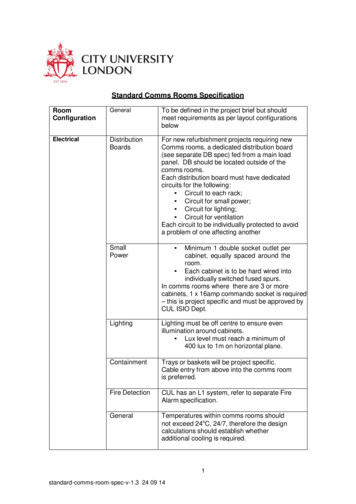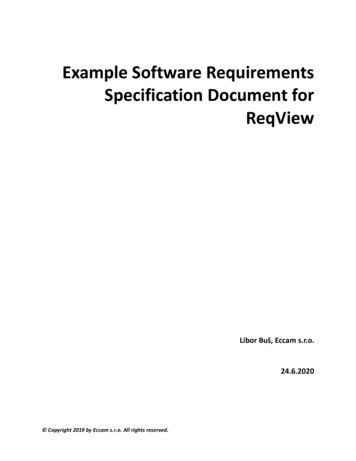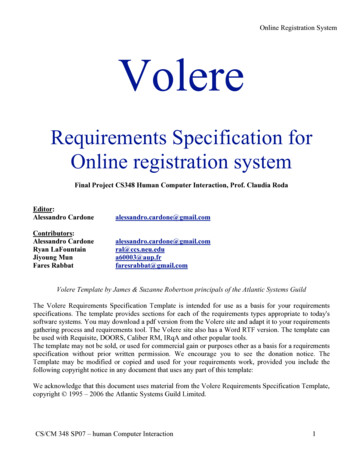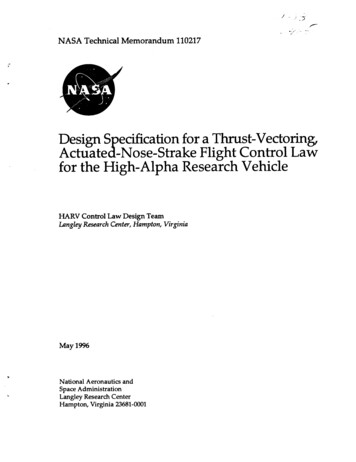
Transcription
JfNASATechnicalMemorandum110217Design SpecificationActuated-Nose-Strakefor the High-AlphaHARVControlLangleyResearchLaw DesignCenter,NationalAeronauticsTeamHampton,Mayl 6andSpace AdministrationLangley Research CenterHampton,Virginia 23681-0001for a Thrust-Vectoring,Flight Control LawResearch VehicleVirginia
TABLEAcronymsChapterChapter.1 General.1.1 Introduction.iv111.2 NASA- IA Implementation.1.3 Reference.222 LongitudinalControl Law .2.1 FunctionalDescription.2.2 Implementation.2.3 Input/OutputLists .2.4 Block Diagram .2.4.1 Flow Chart Notation.3333662.5ChapterOF CONTENTS33.13.23.32.4.2 CalculatedInputs Required .2.4.3 Approachto Calculationof Dynamic Filters .2.4.4 Techniquefor Engage .References.Lateral/DirectionalFeedbackControlLaw .FunctionalDescription.Implementation. .SpecificationDescription.3.3.1 Lateral Stick CommandPath .3.3.1.1LateralStick Deadbandand Shaping Function .3.3.1.2Stick Coordination.3.3.1.3Stick DynamicLimiter and Roll Trim .3.3.1.4Yaw Rate Limiter .3.3.1.5 Roll Override.3.3.1.6Nz Filter and Adjustment.3.3.1.7Stick CommandGain .3.3.1.8Lateral Stick Cross-Gain.3.3.2PedalCommandPath .3.3.2.1Pedal Deadband,Shaping Function,and Yaw Trim .3.3.2.2 Pedal CommandGain .3.3.2.3Rudder Pedal Cross-Gain.3.3.3FeedbackSignalPath .3.3.3.1Filtering,Transformation,and CompensationofSensed Roll and Yaw Rates .3.3.3.23.3.3.33.3.3.43.3.3.53.3.3.6Strake DeploymentCompensation.CommandSummationBlock .3.3.4.1LateralCommandSummationand Filtering .3.3.4.2 DirectionalCommandSummationand Filtering .3.3.5Pseudo ControlsInterfaceand CommandLimiting .3.3.5.1 Pseudo-ControlsInterface.3.3.5.2Control Effector CommandLimits .3.3.5.3 AileronTrailing-Edge-DownDeflectionLimit .3.3.5.4StrakeLinearizingFunction.3.3.6 Mode SwitchingLogic .Control Law Inputs and Outputs .References.3.3.43.43.5Ny Filteringand Offset Correction.Ny InterferenceCorrection.Betadot FeedbackSignal .Roll and Yaw FeedbackGain Tables 53536363737373838434444444950
Chapter4 Lateral/DirectionalPseudo Controls .4.1 General .4.1.1 Modules . .4.1.2 MultirateClock .515155564.2 Module Descriptions.4.2.1 AC PSEUDO CONTROLS(USR39FJL).4.2.1.1 Update MultirateClock .4.2.1.2DifferentialStabilatorAuthority .4.2.1.3SubroutineCalls .4.2.1.4Thrust-VectorScaling .4.2.1.5AccelerometerCorrection.4.2.2DX FYAW FUNCTION(USR33FJL).4.2.2.1FYAW Tables .4.2.2.2 FYAW .64.2.74.2.84.2.9DX FROLL FUNCTION(USR33FJL).4.2.3.1FROLL Tables .4.2.3.2FROLL Calculation.DX DISTRIBUTOR GAINS(USR36FJL).4.2.4.1Roll DistributorGains .4.2.4.2Yaw DistributorGains .DX STRAKE ENGAGE(USR59FJL).4.2.5.1ForebodyStrake Schedules(ANSER).4.2.5.2Strake Deploy/EngageLogic (ANSER).4.2.5.3 AvailableStrake Yaw Moment (ANSER).DX YAWTV ENGAGE(USR52FJL.4.2.6.1Yaw-MomentCapabilityof AerodynamicControls.4.2.6.2Yaw-MomentCapabilityof Thrust-VectoringControls.4.2.6.3Limited Ratio of Aerodynamicand Yaw ThrustVectoring Moments.4.2.6.4Yaw Thrust-VectorAutomaticEngagementSchedule.4.2.6.5 Yaw-ThrustVector EngagementLogic .4.2.6.6AvailableYaw Moment.60616262626364646565666666DX ROLLTV ENGAGE(USR51FJL).4.2.7.1Roll-MomentCapabilityof AerodynamicControls .4.2.7.2Roll-MomentCapabilityof Thrust-VectoringControls.4.2.7.3Limited Ratio of Aerodynamicand Roll ThrustVectoringMoment.4.2.7.4Roll ll Thrust--VectorEngagementLogic .4.2.7.6AvailableRoll Moment .DX INTERCONNECT(USR35FJL).4.2.8.1 Axis Transformation.4.2.8.2Inertial Coupling.4.2.8.3Moments.4.2.8.4AvailableMoment Limits .4.2.8.5 AvailableAccelerations.VYAW Pseudo Control .4.2.8.64.2.8.7Nozzle Compensation.4.2.8.8VROLLPseudo Control .696969AC DISTRIBUTOR(USR38FJL).4.2.9.1Yaw Thrust-VectorPseudo Control .4.2.9.2 Roll Thrust-VectorPseudo Control .4.2.9.3Vane Relief 6768687071717272727273737474747575757575.76
7979804.2.10.3 NegativeLimit .804.2.10.4 Yaw-ReliefAuthority.804.2.10.5Yaw-ReliefDynamics- NonlinearLow-PassFilter . 814.2.11DX ROLLVANE RELIEF (USR53FJL).824.2.11.1VROLL Required.824.2.11.2 VROLLAuthority.824.2.11.3Roll-ReliefDynamics- NonlinearLow-PassFilter . 834.2.12DX ake Command(ANSER).844.2.12.2Strake CommandMixing (ANSER).844.2.12.3IndividualStrake Commands(ANSER).844.2.12.4 ge .85HorizontalBlockDiagram.874.3.1 Input - Output Lists .88References.904.3ChapterYaw4.2.9.6Roll Thrust-VectoringPseudo ControlRelief .4.2.9.7 Roll Pseudo Control Relief .4.2.9.8Distributionof PseudoControls .4.2.9.9 AccelerometerCorrection.DX YAWVANE RELIEF(USR54FJL).4.2.10.1VYAW Required .4.2.10.2Positive Limit .Interface.General.5.2 Input and InstrumentationLists .5.3 CalculatedInputs .5.4 Remarks.999999103105. .Ul
AcronymsACaircraftANSERActuatedAOAangle of putINSinertialLaRCNose Strakespower,Alphafor (Jan. - Jun.PhaseIIIFlightphasefor -on-wheels701EPace 701Eaccesslawcontrollaw flownduring1994)for stemcontrol-lawmodeplus ISystemPhaseivand ght computercontrol-lawmodeThrust-VectoringSystem
Chapter IGeneralI.IIntroductionThe main objective of this specificationis to documentthe HARV ANSER Control Laws insufficient detail for use as a source from which an engineer/programmercan produce computersource code to implementthe control laws in flight software.The secondaryobjectiveis toprovide informationon the control laws to assist a controls engineer in understandingthecontrol laws, debuggingsource code, writing test plans, and analyzingtest data.The ANSER Control Laws were implementedin the ResearchFlight Control System(RFCS) and flown on the F/A-18 HARV (High Alpha Research Vehicle)after it was modifiedto install the Actuated Nose Strakes for EnhancedRolling (ANSER).To meet the operationalrequirementswith the modifiedHARV, the Control Laws must provide three modes ofoperation:1) the TV (thrust-vectoring)mode for use with thrust vectoringwhen the nosestrakes are not being used in a closed-loopmanner; 2) the S (strake) mode for use when thestrakes are in use, but yaw thrust vectoringis not, and 3) the STV (strake/thrustvectoring)mode for use when both strakes and yaw thrust vectoringare in use. Pitch thrust vectoringisused in all three modes.The TV mode is used during ationinvolves deployingthe nose strakes to pre-determinedpositionsin an open-loopmanner to obtain strake aerodynamicdata while the pilot controls the aircraftusing the ANSER Control Laws.The nose strakes are primarilya directionalcontrol effector and have little effect in the pitchaxis. Thus, the ANSER LongitudinalControl Law is based on the NASA-1ALongitudinalControl Law (ref. 1.1), but some modificationshave been incorporatedas a result of NASAl A flight test results.The ANSER Lateral/DirectionalControl Law design effort used theNASA-1ALateral/DirectionalControl Law design as a starting point. This design wasmodifiedas discussedin Chapters 3 and 4 to accommodatethe nose strakes and provide thethree modes of operation.Even though the ANSER LongitudinalControl Law design wasthoroughlyevaluatedduring the design of the NASA-1AControl Laws, the ANSERLongitudinaland Lateral/DirectionalControl Laws were extensivelyevaluatedas a integratedall-axis control law in piloted simulationusing the Langley DifferentialManeuveringSimulator(DMS) during the ANSER design phase. Langleyand Dryden research test pilots were used inthe formal DMS piloted evaluation,and Langley engineeringpilots have also flown the controllaws in the DMS. Throughoutthe design and evaluationprocess, control law performancewascontinuallycomparedwith the HARV control design guidelines.During the design and linear analysis phase extensiveuse was made of MATRIXx ,Version 7.24, and MATRIXx with SystemBuildTMWorkstationVersions2.04 and 2.4.From the SystemBuildTMimplementationthe MATRIXx FORTRANAutoCodethe controlTM Generatorlaws were encoded in FORTRANusingVersions2.21 and 2.23. This FORTRANAutoCode TM was then implementedin batch and piloted HARV simulationsfor control lawevaluation.The ACSL batch simulationhosted on the VAX 3200's operatingunderVAX/VMSV5.5 and on the Unix-basedSunSPARCstation10 and the piloted simulationin theDMS were based on Dryden'sF-18 HARV batch simulation,Releases1 through13.Detailed specificationsfor the ANSER control laws are presentedin subsequentchaptersthis document:Chapter 2 describesthe LongitudinalControl Law, Chapter 3 describestheLateral/DirectionalFeedbackControl Law, and Chapter 4 describesPseudo Controls portionofof
theLateral/DirectionalControl Law. s,andMATRIXx SystemBuildTM diagrams. Chapter 3 also contains a discussion of the designtechniqueused for the Lateral/DirectionalFeedbackControl Law and a functionaldescriptionof the control law. A similar detailed discussionfor the LongitudinalControl Law is containedin reference1.2. Chapter 5 defines the interface between the ANSER Control Law and otherflight software in the form of input and output lists, includingoutputs for diagnosticpurposesonly. In these chapters some referencesare made to the NASA-0 Control Law. NASA-0refers to the Research Flight Control System developedby McDonnellDouglas and flown onthe HARV during Phase II flight tests.The basic up-and-awaycontrol law defined by this specificationis the same forimplementationin simulationand in flight code. However,implementationin real-timeflightcode requires some functions,such as ARM and ENGAGE,that are not relevant to the controllaw's basic performanceand are not included in the specification.Likewise,some featuresused in simulation,such as a facility for linear model computation,are also not included.In afew cases, elements that are applicableonly to simulationor to flight code are so noted in thetext.1.2NASA-1AImplementationAn earlier version of the ANSER Control Laws, designatedNASA- 1A Control Laws, wasflight tested on the HARV during the Phase II flights. During Phase II the aircraft was notequippedwith nose strakes, so the control laws operated only in the TV mode.The parts ofthe Lateral/DirectionalControl Law that are used only in the S mode or the STV mode areclearly marked in Chapters3 and 4. These parts were not implementedin the NASA-1Aflightcode.Results of the NASA-1Aflight tests led to some modificationsControl Law design to improve performance.Those modificationslaws defined by this specification.to the original ANSERare included in the controlReferenceOstroff, Aaron J.; Hoffier, Keith D.;and Proffitt, Melissa S.: High-AlphaResearchVehicle (HARV)LongitudinalController."Design, Analysesand SimulationResults,NASA TP 3446, July 1994.1.2Ostroff, Aaron J.; and Proffitt,High-Angle-of-AttackAircraft.Melissa S.: Longitudinal-ControlNASA TP 3302, Feb. 1993.DesignApproachfor
151DescriptionThe ANSER LongitudinalControlleris composedof a feed-forwardcommandgenerator(FFCG) and a feedbackcontroller that was designed using a Variable Gain Output Feedbacktechnique(refs. 2.1 to 2.4). The feedbackcontrolleris a direct digital design based upon asample rate of 80 Hz and is implementedin incrementalform. Feedbackvariablesare pitchrate, angle of attack, and normal acceleration,and the controls are horizontalstabilatorandpitch thrust vectoring.Scaling parametersfor the variable feedbackgains are a function ofangle of attack, impact pressure,static pressure,and some combinations.Flaps (leading andtrailing edge) are scheduledas in the basic F/A-18 Controller.The objective of the FFCG is torelate pilot commandsinto equivalentcommandsto the feedback controller.Both the FFCGand the feedback controllerare combinedand implementedfor multi-rateuse. Flap logic,feedback gains, angle-of-attack(AOA) selection logic, sine(AOA),and cosine(AOA)areimplementedat a slower rate of 40 Hz. For a more complete functionaldescriptionof theLongitudinalController,see references2.3 and 2.4.2.2ImplementationThe LongitudinalControlLaw was implementedin two subroutines,USR 18V 151 andUSR 19V 151, using the MATRIXx FORTRANAutoCode TM generator.The definitionandunits of all inputs and outputs for these subroutinesare describedin Section 2.3 in Tables 2.1through 2.6 for the INPUTS,OUTPUTS,and STATES(trimmingcoefficients).Symbolsshown in the second column of these tables are those used in the MATRIXx FORTRANAutoCodecontroller.AutoCodeThe horizontalflow charts in Section 2.4 show the completelongitudinalVariable names in the flow charts match the variable names in the FORTRANTM.TMimplementation.In case of discrepanciesbetweendocumentationsourcessuch asnumber of significantfigures in constants,AutoCode TM is the defining source.AutoCode TMand the horizontalblock diagramsshould agree in these cases.Figure 2.1 (a) (forUSR 18V 151) has three colums of stored gains labled "DEFAULT","GAINSET1, and"GAINSET2".These are for DIAL-A-GAINuse where each set of gains will be usedseparatelyfor evaluationduring specified flight maneuvers,with the DEFAULTset usedinitially.DIAL-A-GAINrefers to the flight software logic by which the pilot can select anyone of three sets of gains for the LongitudinalControl Law.2.3Input/OutputListsTableNO123456AUTO CODESYMBOLAOAPAOAINSQCFILTER2PSRITRMMING2.- SubroutineUSRI8V151- kINS (deg)(deg)10 rad/sec filtered imapact pressureStatic Pressure(lb/ft z)Pressureratio - (QCFILTER2/PS)Trim flag (real):(lb/ft 2)0.0 Operate1.0 Trim3
TableNO1234567891011121314151617AUTO CODESYMBOLTEFSC 1LEFSC1AOAFGIGTILY1GTILY2GTILY3GTILU 1GTILZ 1RHON 1RHON2RHON3RHON4RHON5RHON6COSALFSINALF2.2 - SubroutineUSR18V151- -of-attackfaded between probe and INS (deg)Fader gain input for AOA (used to initialize fader gainstate)Feedbackgain (proportional)for angle-of-attackFeedbackgain (proportional)for pitch rateFeedbackgain (proportional)for load factorFeedbackgain for filterFeedbackgain for integrator1st variable gain-scheduleparameter2nd variable gain-scheduleparameter3rd variable gain-scheduleparameter4th variable gain-scheduleparameter5th variable gain-scheduleparamet
A similar detailed discussion for the Longitudinal Control Law is contained in reference 1.2. Chapter 5 defines the interface between the ANSER Control Law and other flight software in the form of input and output lists, including outputs for diagnostic purposes only. In these chapters some references ar
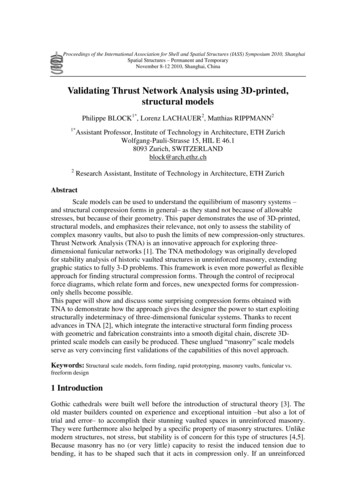
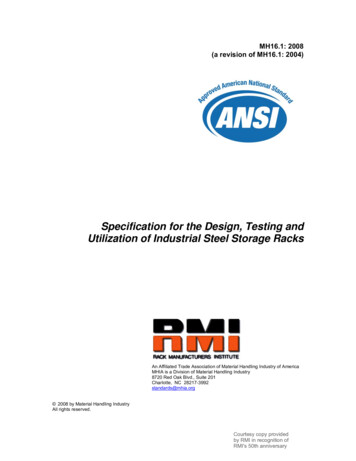
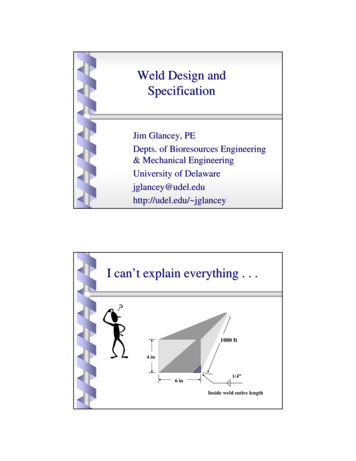
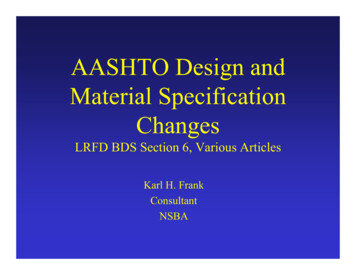
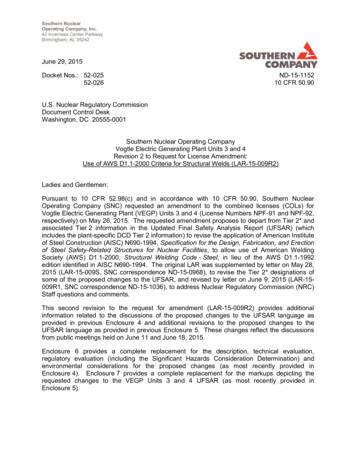
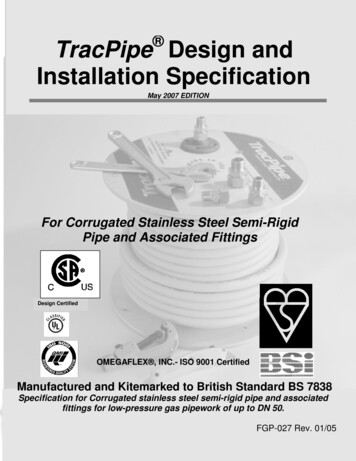

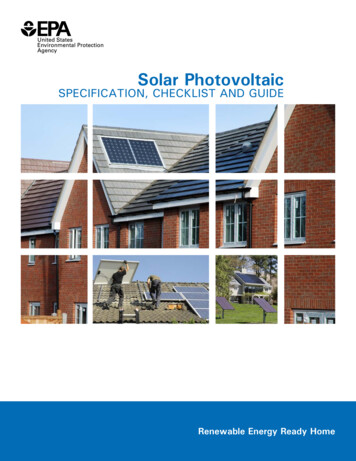
![[MS-ADTS-Diff]: Active Directory Technical Specification](/img/1/ms-adts-170316-diff.jpg)
